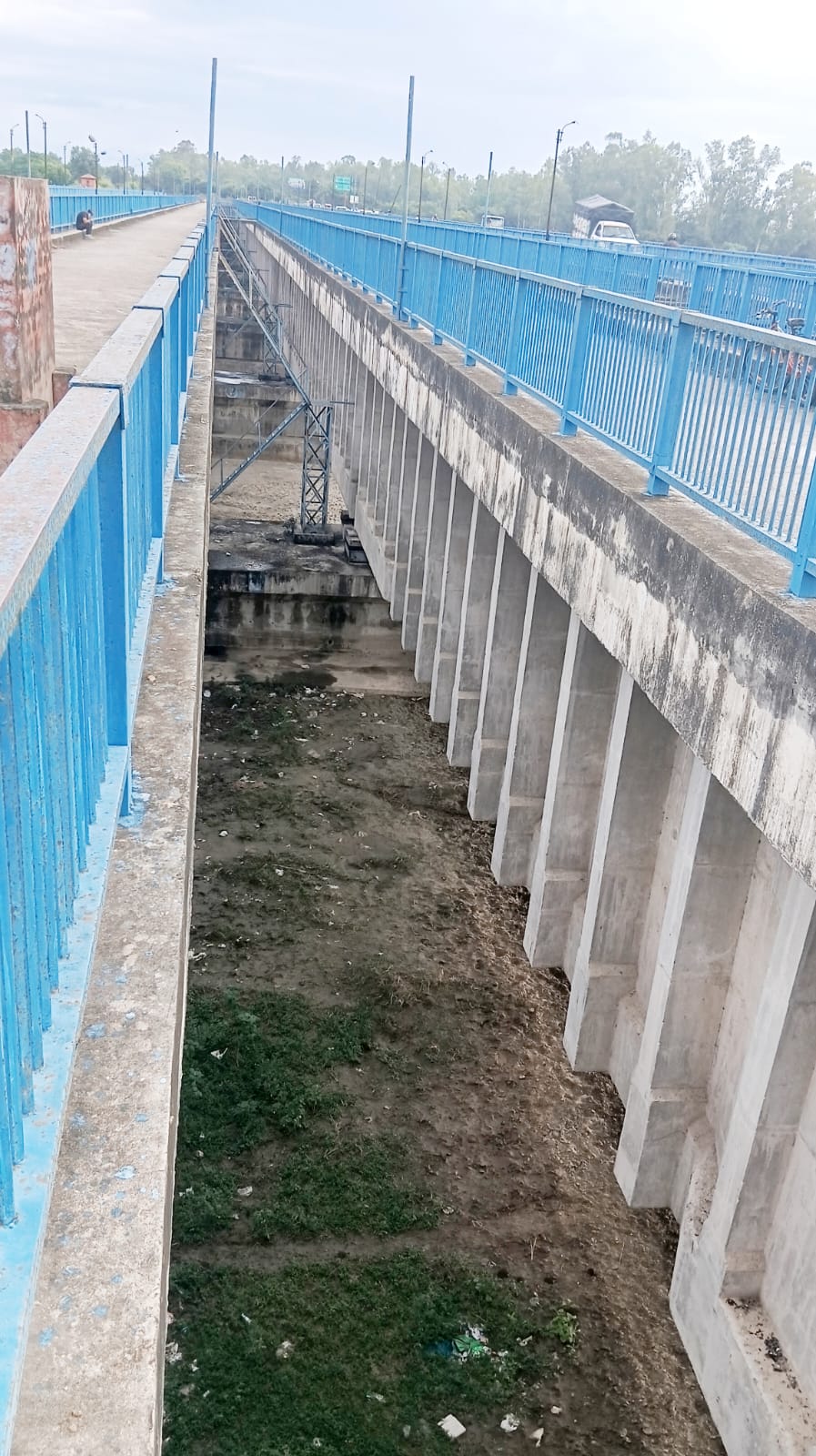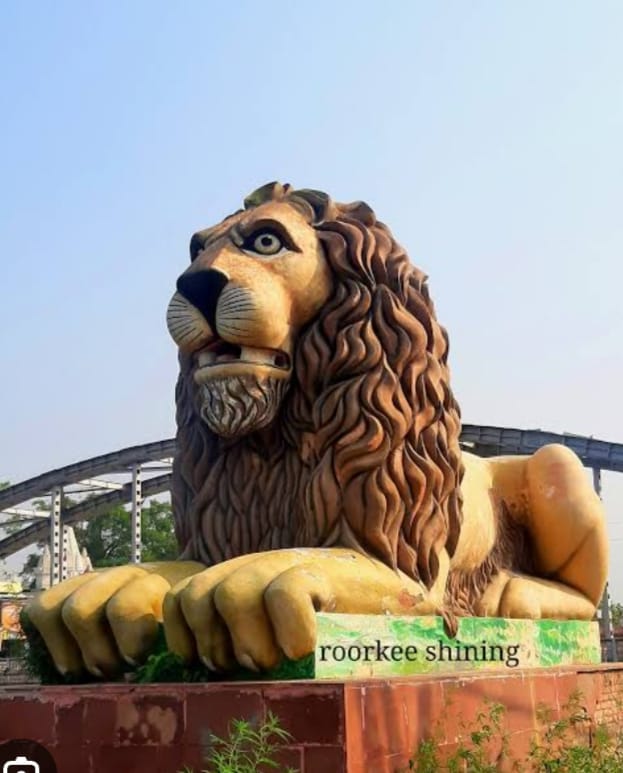By
Kaushal Kishore
Materials Engineer, Roorkee
The new Solani aqueduct on Ganges canal Roorkee was built with prestressed concrete which allows for longer spans and a simple more robust design compared to old bricks, lime- surkhi mortar masonry arches of the old aqueduct, in which 8.5 crores bricks were used, while iron railing used in the sides of two lanes were imported from England. This is interesting to note that materials bringing those days on ship from England to Indian ports take 6-10 weeks via the Suez canal or 3 to 6 months via the longer Cape of Good Hope. Calculate in it also time taken on road from Indian ports to Roorkee.
After retirement from University of now IIT Roorkee I joined M/S Roffe Construction Chemicals Pvt.Ltdd, Mumbai as it’s Chief Concrete Technologists afterwards I became it’s one of the Director.

AQUEDUCT picture taken on 7/10/2025
For the contractor of above aqueduct I designed M-40 grade of concrete with Roffe superpladticizer. Those interested may read my paper by visiting Google site and log in; Civil engineering portal The Ganges canal by Kaushal Kishore.
I had designed numerous concrete mix design almost all cements of India in this I find Utra Tech cement as one of best cement OPC and PPC both With Ultratech cement I had designed numerous concrete mixes from ordinary strength to M-80 grade concrete, self compacting concrete, shot crete concrete, fibre reinforced concrete, fly ash concrete and more There is life after retirement and after retirement I worked for 30 year’s which includes in free time working in home research and testing laboratory and numerous construction sites visits almost all India and outside India. At my age of 92 years I still work for 12 hours daily.
I had never worked for money. In spite of doing so gigantic work what to say about car I even do not have 2 wheeler not any of my house not a single inch of land in this world only pension from IIT Roorkee and few clothes

























Very Very Happy new year to all of you. I am doing Building & quantity Surveying from The Institution of Surveyors, New Delhi. Can you tell me after doing this i am able to do ME/M.Tech?
this is best trade as a time
What if Graded Granular Aggregates to be used for sub base in Road crust is replaced for Cement Concrete by adding require volumetric quantum of cement for Plum Concrete.
before putting this quarry you should know the role of GSB in Road-Crust and it is as follow:
1) It acts as a drainage layer and this porpose is not full filled by your option
2)As GSB is well graded,it shows elastic property and play an important role in stress distribution.
3)The source of water in pavements is atmospheric precipitation. This water can enter the pavement through several ways (e.g., cracks, infiltration, through shoulders and ditches, high groundwater) and is moved by an energy gradient, such as gravity,and capillary forces.
The free water can be removed by draining vertically through the subgrade or laterally through a drainage layer.
Hence we canot replace GSB as per your advice.
Hi, sir,madam this is venu. i am diploma student so i want project work which suitable for dipoma pease tell me im waiting for ur mails
hay venu i am kauhik,i completed my diploma jst last yr frm govt poly nagpur,u can take a project on underground canal-tunnls
You may take a Project from Highway engineering like Analysis of Flexible Pavement,Use of Polymer modified Bitumen in roads etc.But the most important thing I want to tell you that after Diploma,go for BE because on Diploma basis you can not effectively stand in the market.
I AM ALSO CIVIL ENGINEER……………………WE PROUDLY SAY ……………………
what is the exact meaning for youngs modulus?
ratio of the tensile or compressive stress to the corresponding strain
Youngs modulus E represents, upto what stage of loading the material(steel..,) remain in elastic limit
youngs modulus is ratio of stress to the strain means ………..E=f/e,f=stress, e=strain
its a short name of modulas of elasticity which is ratio of shear stress to shear stain if i am not wrong.sorry if its not right
The Young Modulus, E is a material property that describes its stiffness and is therefore one of the most important properties in engineering design.
slope of the stress strain curve is defined as youngs modulus…its considered constant in the starting it slowly decreases and reaches zero at ultimate strength
its ratio of stress to stain……in any elastic material in elastic lmt
it is ratio between stress and strain by a force acting on body.
can any one tell me a super slogan for civil engineering…..
when civil engineering . rests world rusts
civil engineering is the mother of all engineering
civil engineers are the engineers of engineers.
civil is C=commonsense I=is V=very I=Important in L=Life
East or west civil is the Best………………
please provide full detail estimation and costing of any two storey building if any one have it ..please i have to submit it as a minor project..
go through books my dear frnd it good in future ………
can help me about Curtain wall technical?
curtain wall as we know as like as precast wall in technical you must take care when you are anchor of each other.
A structure doundation is failing in overturning, it is already been constructed at site. Can you please help me out to increase the counter wieght to delat with the overturning effect.
wat is soil bearing capacity of soil of that site
soil bearing capacity implies how much thrust soil can withstand.
mathematically is equal to total thrust/Area
soil bearing capacity is a very important property in foundation design.
A foundation is alredy constructed at site but while checking it found to be failed in overturning. Please suggest me a solution to increase the counter for dealing with the overturning.
sir i dont knw mch as i m jst diploma pass out n nw in 2nd yr BE bt u can fill slurry in foundation and if possible n if soil is BC dan u can replace it
u can go for raker piles to take that overturning moment
JAi hind frnds. i want to bring a book of concreate tech. plz tell me good name of the author.
MS Shetty
m.s. shetti is the best for concrete technology.it is easy to understand and very stuffed one.
newly published Design of concrete Str , By JN Bandopadya
it is the mother of the all engineering branches
pleas give me topic in research paper that involve civil engineering works..
what is the xact meaning of shear??
in one word shear means unbalancced force, this unbalanced force results in peculiar behaviour of beams….
which indeed results in bending ,deflection,some times it leads to failure of structure.
shear means in common language “Twisting” and if u want more about shear pls refer SS bhavikati SOM text book
What can be the effect of casting plinth beam after three months of casting supporting column, in case adhesive chemicals would not have applied on vertical surface of column beam junction. The plinth beam is constructed after constructing the column above plinth level keeping dowels for plinth beam.
see that is not the correct way ……. concrete is a homogeneous material first we want to caste the plinth beam ….bec it act like tie to the hole structure and the structure become earth quake resistance structure ……….. suppose from ur side first ur casting supporting column after that ur gong to caste plinth beam ……. it s bad to the structure bec its not bond properly b/w plinth beam and supporting column
sir…i want to civil engineering.i from pakistan…i want to do civil engineering from abroad..which university will be suitable for me …it shouldnot be to much expensive….thanks waitng for ur positive reply
i think you must do civil engineering from Pakistan…….
structure that is the frame will not act as one if u use such ways
Please give me the full procedure with formulae for RCC design of 10 storey residential building
RCC DESIGN is a broad term consists
column design
slab design
foundation design
plinth
lintel
L beam
T beam
1 way 2 way beams….
Reference code IS 456 : 2000
i use book JN Bandopadhya , very simply all above are explained, u can use that